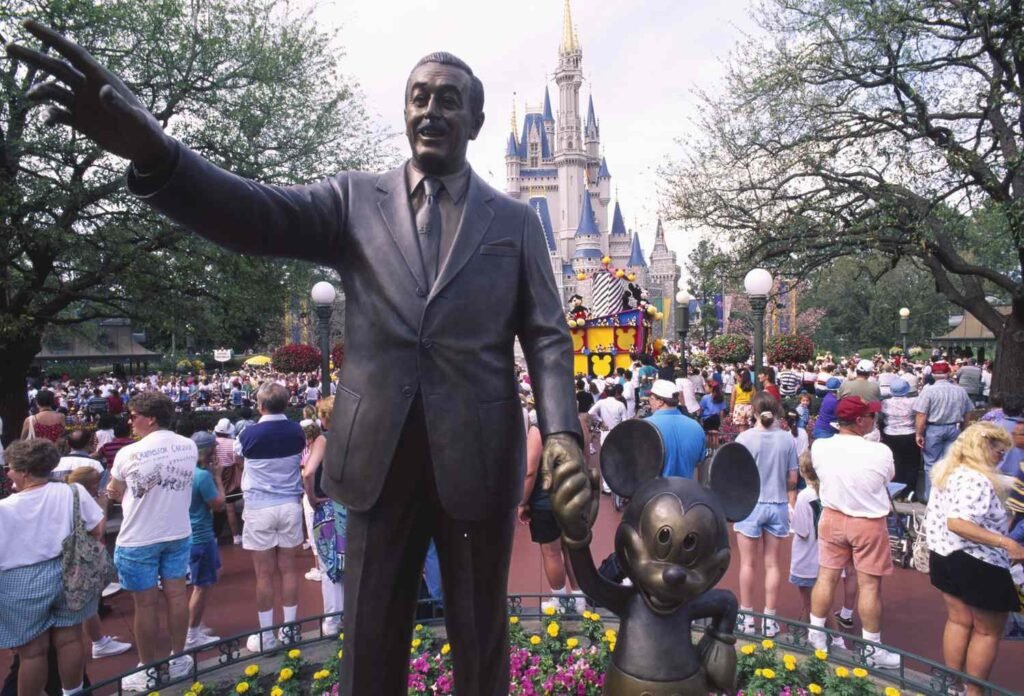:max_bytes(150000):strip_icc():format(jpeg)/GettyImages-541217432-c577bade59814568b8a39718f20c6af8.jpg)
In late 2022, Disney (DIS) was hemorrhaging money from its streaming ambitions, with losses from that unit topping $1.5 billion, more than double from a year earlier. The entertainment giant seemed to have lost its magic touch, posting disappointing earnings that sent shares plummeting and led to the ouster of CEO Bob Chapek in November 2022—only months after he was given a contract extension worth millions.
What happened next reads like a classic Disney redemption story—the return of Bob Iger, the legendary executive who had previously transformed the company through blockbuster acquisitions and theme park expansions, to save the day.
Here’s how Disney staged its most recent—and perhaps most dramatic—comeback.
Key Takeaways
- In late 2022, Disney’s stock was down significantly—its worst performance in half a century and faced a crisis of confidence that led to CEO Bob Chapek’s dismissal.
- Bob Iger’s dramatic return as CEO in November 2022 helped trigger an immediate turnaround strategy focused on massive cost cuts, streaming profitability, and refocusing on creative quality over quantity.
Disney’s First Comeback
Disney’s latest comeback follows a familiar pattern. The company has faced existential threats before—in the early 1980s, it was saved by Michael Eisner, Frank Wells, and Jeffrey Katzenberg, who revitalized animation and maximized the value of the company’s intellectual property. Disney emerged from its box office slump and produced some of its best films, scoring well with both audiences and critics, including The Little Mermaid, Beauty and the Beast, Aladdin, and The Lion King. Disney also broadened its audience with the launch of Touchstone Pictures and maximized the value of its intellectual property by releasing classic films on home video, licensing merchandise, and expanding its theme park business, both domestically and internationally.
The Early 2000s: Acquisitions and Streaming
By the early 2000s, Disney was struggling again and in need of change. Creativity was stagnant, the company’s animated pictures were losing ground to CGI-animated films, and the international theme park expansion wasn’t going according to plan. In 2005, they turned to Bob Iger.
Iger helped move Disney back to the top of the box office charts and strengthened its intellectual property empire through major acquisitions, including Pixar, Marvel, Lucasfilm, and 21st Century Fox.
During Iger’s initial 15-year tenure, which ended in 2020 with his retirement, Disney’s revenues and market capitalization grew significantly, with its stock price increasing about sevenfold.
The Iger Comeback
But by 2022, Disney faced its most severe crisis in decades—one that would require Iger’s most dramatic rescue mission yet. After two years under Chapek, Iger came out of retirement to rescue Disney once again. Iger’s return as CEO came with an immediate mandate: fix the streaming losses, cut costs dramatically, and restore creative confidence.
The first phase focused on massive cuts. In February 2023, Iger announced 7,000 job cuts as part of a $5.5 billion cost-cutting initiative, targeting $2.5 billion in non-content costs and $3 billion in content spending—job cuts would continue into mid-2025.
More importantly, Iger immediately reversed Chapek’s organizational structure. He returned control to creative executives and prioritized quality over quantity in Disney’s content.
Looking ahead, the company is focused on capitalizing on Disney’s strong content library, continuing to grow its streaming service, and improving and expanding its theme parks and cruises, which are the company’s highest-margin business. Observers have already noticed positive changes at theme parks, and tickets for Disney’s huge new cruise are reportedly selling well.
Fast Fact
Iger has committed to staying through 2026 to ensure a more successful succession than he had with Chapek.
The Bottom Line
Disney faces competitive pressures in key markets, a continued decline in cable and network TV, and operates in a highly cyclical industry.
Iger’s combination of surgical cost-cutting, organizational restructuring, and renewed focus on quality content creation transformed Disney from a company hemorrhaging money on streaming dreams into a profitable entertainment powerhouse once again.

